Daytime Astronomy
Parallel Session
3rd Shaw-IAU Workshop on Astronomy for Education
Session timeblocks
Wednesday Oct. 13, 2021
UTC: 6:30 p.m. -
8 p.m.
Thursday Oct. 14, 2021
UTC: noon -
1:30 p.m.
Schedule
-
Daytime astronomy projects for middle school students
Wednesday Oct. 13, 2021
UTC: 6:30 p.m. - 6:45 p.m.Thursday Oct. 14, 2021
UTC: noon - 12:15 p.m.Time reckoning and seasons are linked to the apparent position of the Sun in the sky. Outdoor project work helps to determine the cardinal directions, local (astronomical) noon & standard clock time, yearly noon shadow changes, rough time reckoning and seasonal day length changes. Few activities can be completed during the day, and some will require measurements and observations on different days of the year. The learners observe and note the key aspects, contextualise them, undergo a cognitive apprenticeship, help analyse and interpret information, and learn to work in groups. Observing and interpreting the gnomon's shadow and the project encourages young people to participate in knowledge generation.
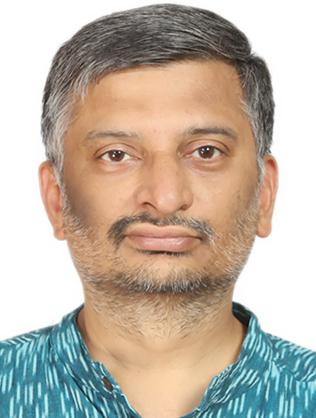
Thathamangalam Viswanathan Venkateswaran (Vigyan Prasar, New Delhi)
For more information about this talk click here
-
Where are we? How do we move?
Wednesday Oct. 13, 2021
UTC: 6:45 p.m. - 6:55 p.m.Thursday Oct. 14, 2021
UTC: 12:15 p.m. - 12:25 p.m.If somebody asks me "What Everyone Should Know About Astronomy Education", it would be concepts like "where are we?" and "how do we move?". I think that this information and associated activities and methods, give us a perspective about who we are. The talk shows the movements of the Earth in the southern hemisphere, the path of the Sun during the day, the connection with the southern celestial pole, and the different experiences with activities that complement this journey.
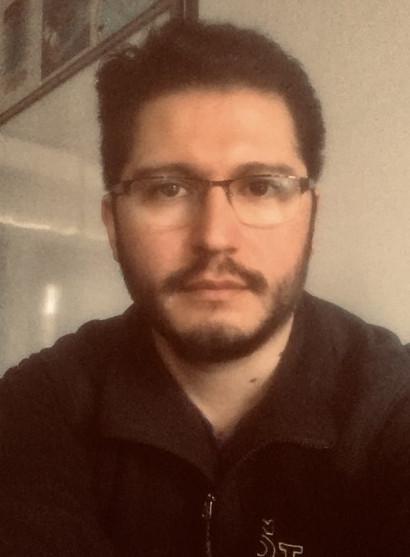
Edgardo Quintana (Colegio San Francisco Javier)
For more information about this talk click here
-
The Globolocal Project and the use of the Parallel Globe
Wednesday Oct. 13, 2021
UTC: 6:55 p.m. - 7:05 p.m.Thursday Oct. 14, 2021
UTC: 12:25 p.m. - 12:35 p.m.From didactic research we fund initial conceptions with big difficulties in understanding the point of view of astronomy, geometry, physics, and geography about the spherical Earth. With a globe in the same orientation like the Earth in space, the Parallel Globe, we observe fundamental astronomical relationships between Earth and Sun, in real time. The international Project Globolocal is democratic, because we distinguish concepts like high-low, above-under and North-South. Each location, seen from the place of observation, is at the top of the world, so it helps to have a correct image of the Earth in the space.
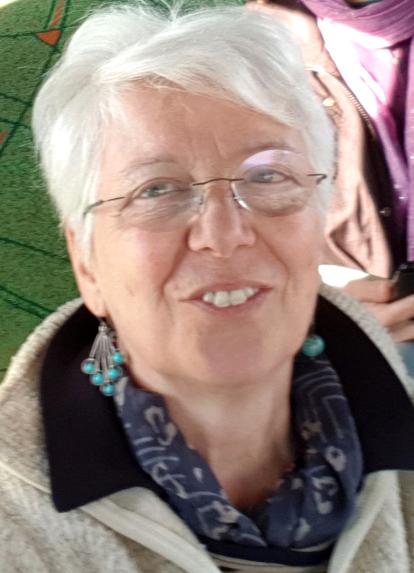
Nicoletta Lanciano (Università di Roma La Sapienza)
For more information about this talk click here
-
The Eratosthenes experiment: a 2300 year old ingenious measurement
Wednesday Oct. 13, 2021
UTC: 7:05 p.m. - 7:15 p.m.Thursday Oct. 14, 2021
UTC: 12:35 p.m. - 12:45 p.m.In ca. 240 B.C., the Greek astronomer Eratosthenes made the first good measurement of the size of Earth. By noting the angles of shadows in two cities on the summer solstice and by performing the right calculations, he was able to make a remarkably accurate calculation of the circumference of Earth. In our educational activity, students repeat the experiment by using e-learning tools, simple instruments, and a platform (eratosthenes.ea.gr) that allows schools to collaborate with each other. Our aim is to turn this international activity into an important world event, giving students, teachers and educators from around the world the opportunity to actively engage in building online learning communities, exchange ideas and material through innovative initiatives.
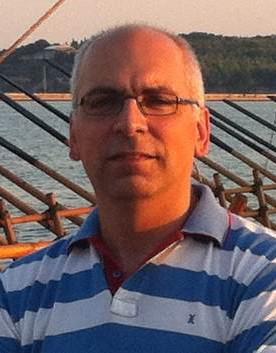
Angelos Lazoudis (Ellinogermaniki Agogi)
For more information about this talk click here
-
Analemmas in education
Wednesday Oct. 13, 2021
UTC: 7:15 p.m. - 7:25 p.m.Thursday Oct. 14, 2021
UTC: 12:45 p.m. - 12:55 p.m.Analemmas are fascinating. Their shape arouses curiosity about what it can mean, while knowledge of their origin challenge an old notion that the sun is always in the same place at noon, every day. From the analemma, it is possible to calculate simple quantities such as the latitude of where they are observed, as well as the inclination of the earth's rotational axis. It is also possible to deduce solar mean time is constructed, and that it is only exact on four days every year. The exercise taught in this session allows students to carry out measurements of the suns motions themselves and, based on these, calculate some basic quantities in the movements in our solar system.
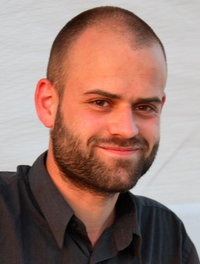
Vegard Lundby Rekaa (NAEC Norway)
For more information about this talk click here
-
No eclipses glasses? No problem! Simple Tools for Observing Solar Eclipses
Wednesday Oct. 13, 2021
UTC: 7:25 p.m. - 7:35 p.m.Thursday Oct. 14, 2021
UTC: 12:55 p.m. - 1:05 p.m.A solar eclipse is one of the most awe-inspiring spectacles that can be witnessed. The recommended method for viewing an eclipse safely is using eclipse glasses or a telescope fitted with a solar filter. But these tools are not available to the majority of people around the world. This talk will showcase two simple methods (pinhole and mirror projection) for viewing a solar eclipse using household objects, thus making eclipse viewing easy, affordable and accessible.
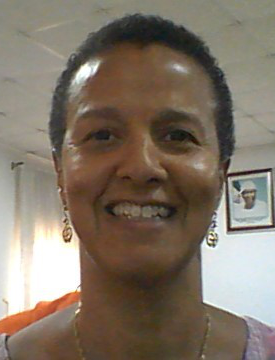
Sarah Abotsi-Masters (Ghana Planetarium)
For more information about this talk click here
-
Discussion Panel: Daytime Astronomy
Wednesday Oct. 13, 2021UTC: 7:35 p.m. - 8 p.m.
Thursday Oct. 14, 2021
UTC: 1:05 p.m. - 1:30 p.m.Chair:

Markus Nielbock
Panel: Sarah Abotsi-Masters
(Ghana Planetarium), Nicoletta Lanciano
(Università di Roma La Sapienza), Angelos Lazoudis
(Ellinogermaniki Agogi), Edgardo Quintana
(Colegio San Francisco Javier), Vegard Lundby Rekaa , Thathamangalam Viswanathan Venkateswaran
(Vigyan Prasar, New Delhi)
Posters
-
Daytime astronomy with CLEA resources
Frédéric Pitout (Institut de recherche en astrophysique et planétologie)
Organising a night-time observing session in schools is not always easy for various reasons: logistical issues, lack of equipment, etc. Yet, we tend to forget that observing our Sun is also a great way to study astronomy. In this poster, we shall present a few activities used by CLEA and detailed in a book, entitled The Sun, issued in 2018. Some of those activities are very easy to carry out with very little material; some require some more elaborated equipment.
-
Reckoning Earth's Size by Taking a Dip
William H. Waller (Endicott College and The Galactic Inquirer)
An engaging technique for determining the Earth's size makes use of one’s local horizon and its dependence on one’s height. I have made use of a nearby beach, from which a stone breakwater is visible near my local horizon. Equipped with binoculars, I slowly walk into the water while sighting a piece of the breakwater that appears just above my horizon. As I descend, I watch for the moment when that piece just submerges below my apparent horizon. The measured height from the waterline to my eyes is related to the distance of the breakwater and the Earth’s radius by the Pythagorean theorem, and so I can readily calculate the radius of Earth. Over several years, I have successfully engaged high-school students in conducting this experiment amid a wide variety of ocean conditions.
-
Using Innovative Technologies to Study the Sun
David Lockett (Urban Aerospace)
Our sun, a dynamic star, varies constantly. It also produces energy and solar wind that impact us on Earth. See how students can discover the ever-changing power of the sun through innovative technologies such as VR, 3D printed images, Helioviewer and NASA’s Space Weather Action Center. How do you create hands-on and engaging activities to teach about the Sun? Virtual reality, 3D printing and dynamic images of the Sun will be used to teach important concepts related to our dynamic star, the Sun.




